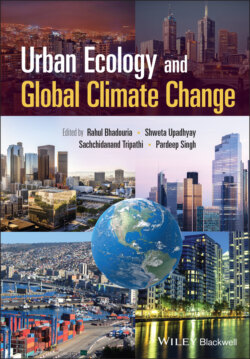Читать книгу Urban Ecology and Global Climate Change - Группа авторов - Страница 24
1.3.2.1 Invasive Species and Climate Change
ОглавлениеAs mentioned earlier, even under severe climate change conditions, the distribution and responses of both native and exotic plants will be similar. However, there will be greater chances of invasion of the alien species to the new sites which have become naturalised in the urban gardens/areas (Richardson et al. 2000; Lososová et al. 2018). Moreover, the risk of invasion will further intensify under the combination of warmer climate and urbanisation (with UHI effects), particularly in the parts of Europe (Central and Western) where native plants communities may not respond to these changes (Walther et al. 2009). In a study on the interactive effects of exotic plants and aridity, Cubino et al. (2021) observed that exotic plants showed better growth (height and leaf size) and responses under the warmer and drier regions, whereas poor responses under cooler and wetter regions as compared to the co‐occurring native plants. This further indicates the chances of the spread of invasive species in the newly warmer and drier regions mediated by the changing climate and UHI effects. Thus, there is a need to consider the interactive effects of climatic variability and invasion to know the future plant community structure and composition in different regions of the world (Cubino et al. 2021).
In the next sections, results of bibliometric analysis performed for the urban ecology‐climate change nexus have been presented, followed by the emerging features of urban ecology for the climate change mitigation.
